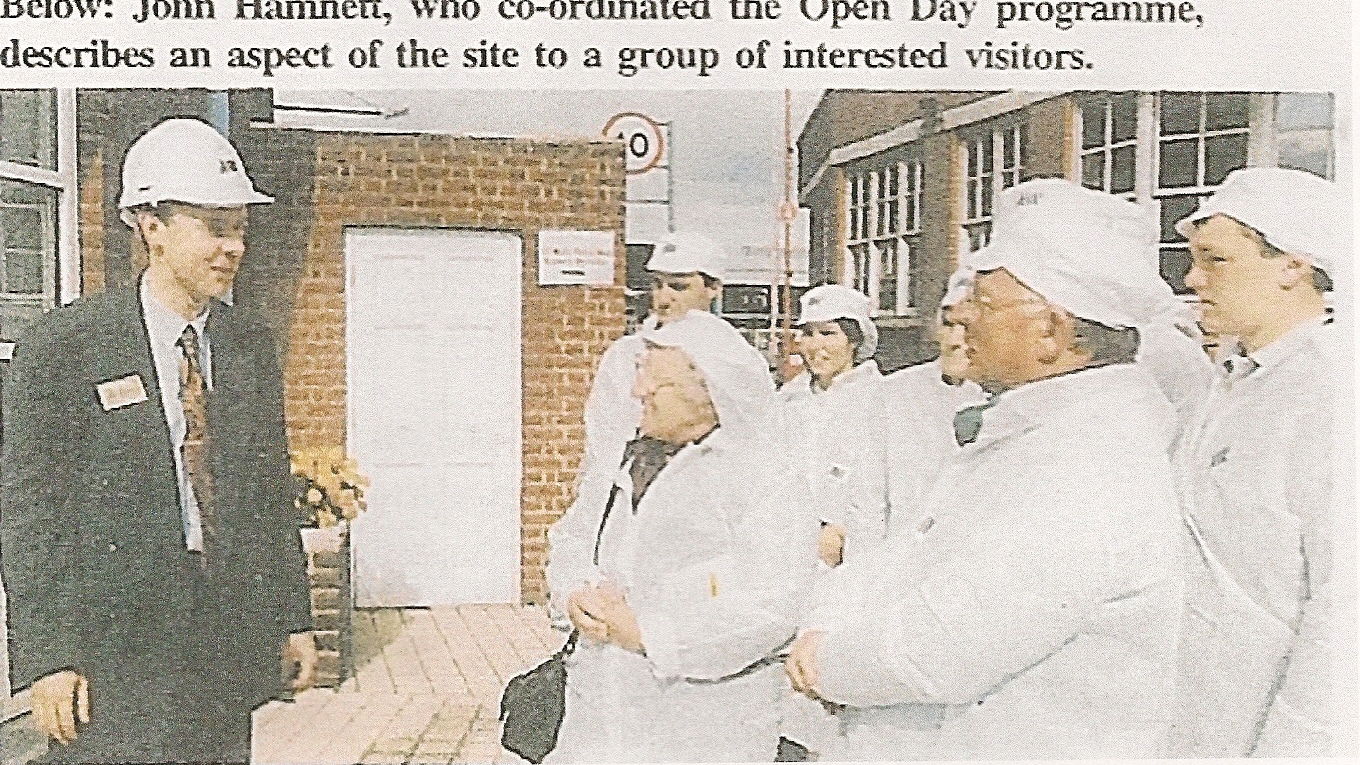THE DARK ART OF PROPAGANDA-THE PUBLIC FACE
“WINNING ITS PUBLIC RELATIONS BATTLES BECAME AN OBJECTIVE OF GROWING SIGNIFICANCE”- HUGH PODGER of former albright and wilson
With the increasing concerns about chemical factory pollution and its associations with human health after disasters such as Bhopal and Seveso, and under the critical eye of the press following the British Flixborough disaster, sceptical public and proactive campaign groups such as Green Peace, Albright and Wilson like other members of the lobbyist Chemical industries Association (CIA) began a campaign of their own. Their mission was essentially to try to present themselves as always pursuing Health and Safety as their top priority, embracing enthusiastically new environmental legislation such as the Control of Industrial Major Hazard Regulations (CHIMAH) 1984, (which they would have had a hand in watering down), whilst also “sexing up” their importance in the local community as an employer, generous benefactor and socially responsible allround good eggs.
Many of the original industrialists in the area such as Albright himself had donated pieces of land to the public as parks, a rather pathetic attempt to cement their names on future historic plaques to mitigate the fact that their factories were still belching out toxic carcinogenic chemicals and waste into the atmosphere.
Albright and Wilson were in a chemical industry loop with links to virtually every university in the country, particularly the one located in their leafy retreat in Edgbaston- thus research funding leads to more research funding and a never ending job prospect for those in such industries from those universities. THERE APPEARS TO BE A MERRY GO ROUND OF JOB SHIFT BETWEEN PRIVATE COMPANIES, UNIVERSITIES AND REGULATORS- AND SO IT HELPS TO BE “LINKED IN” TO THIS NETWORK.
In Albright and Wilson’s case, public scrutiny began to turn to the products that they made around the late 1960’s. Of major note was the link between phosphates and Eutrophication and the role that detergents played in causing this, and especially pollution following incidents at their Long Harbour plant.
Albright and Wilson also began an aggressive PR campaign to try to present themselves as a “good neighbour” around their local factory sites- this a consequence of The Deposit of Poisonous Waste Act 1972. This principally involved hiring their first “environmental protection officer” , James Farquhar and the distribution of leaflets amongst local houses, including those that surrounded the Trinity Street factory. Open days began to be held where children would be given an Albright and Wilson uniform and hardhats to put on, and parents would be told what “harmless” every day household products the company made.
Somehow inviting in the residents would show that they had nothing to hide, especially when the local paper was there to capture the fun. They were not invited to places like Rattlechain Lagoon on the factory tour, and undoubtedly cups of tea were not served with white phosphorus.
Liason groups also brought in sceptical and vociferous residents, opposed to noise, smells and nuisance. A place on the top table with the local councillors and the site managers would no doubt make them feel important and that the company were listening to their concerns, when all that they were trying to do was to carry out a litmus test as to what those residents knew about their activities and dilute them with prepared rebuttle and later PR spin. They would also take out advertisements in the local press and sponsor “community events” in an attempt to try to put themselves at “the heart of the community.”
Add to this the reality that some of this “community” face were in fact benefitting from the existence of this company. Some were related to people who worked for the company, or had other pecuniary interests undeclared before the days of any public scrutiny of local authority members. We therefore have a “community” around such a site represented by well placed shills of industry and also union politics, all expounding the virtues of a chemical polluter.
Site managers were also instrumental in this dark art of propaganda, manipulating the truth, distorting the risks and presenting a public smile that hid the grim facade of a dirty and dangerous industrial polluter who were providing jobs for the area that they were polluting- as though this was the sole concern of the handful of people who benefitted.
If having read this surfer, this art seems strangely familiar to you with your own hazardous waste site of concern you are not alone, and the penny should now have dropped about how this lobbyist industry tries to distort the truth at every turn, especially using its journalistic links. PR merchants like journalists are closely joined at the hip. They are skilled liars.
Rhodia and Solvay have perpetuated these techniques and are still using them in trying to convince people that they care about the deaths of wildfowl on Rattlechain lagoon which they alluded to as being a “Mere” and that they are not responsible for the problem.
More recently Rhodia and Solvay have started to produce a community flyer, probably the most environmentally friendly artefact to come out of their polluting factory, as well as a bi -annual calendar delivered to local residents with details about site emergences. These altruistic alchemists also appear to sponsor the local Christmas lights, also taking out adverts in the local press wishing everyone in “their” community a happy festive period. It’s as though they never heard that a dirty chemical factory in a consultation zone is with you for life, and not just for Christmas.
Those at Trinity Street seem quick to try to set the agenda that their toxic waste lagoon is not responsible for “cause of death” yet do not stop to consider the proven “significant harm” that such chemical compositions are capable and have caused to these birds. THIS DOES NOT APPEAR TO BE “ENVIRONMENTAL PROTECTION” TO US.




